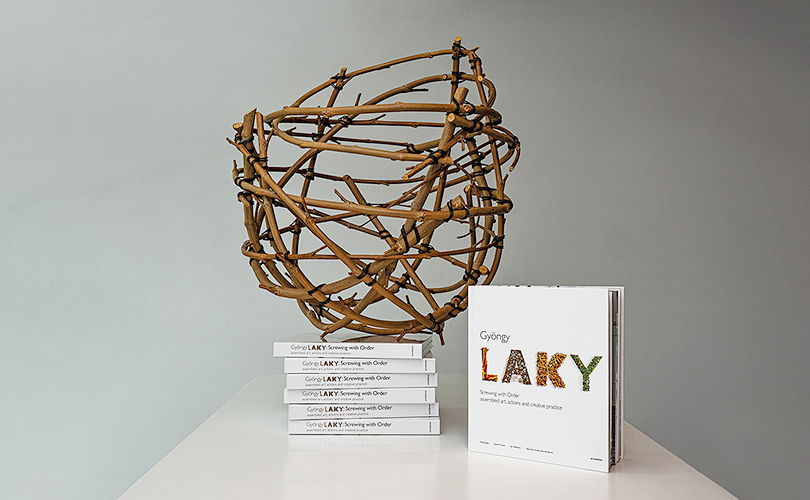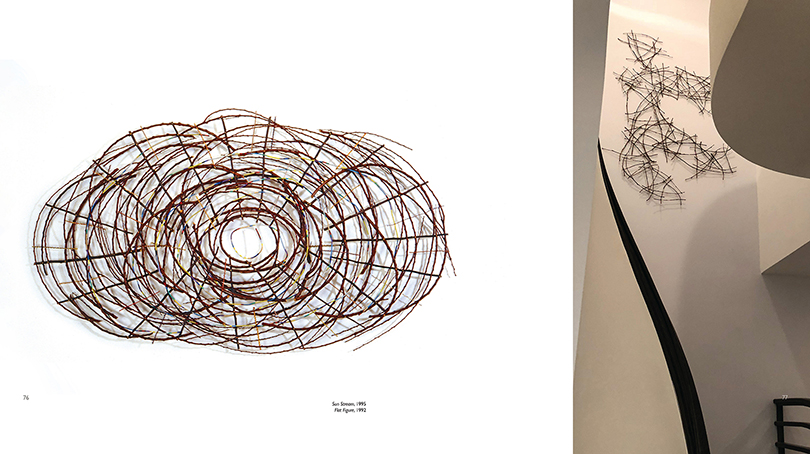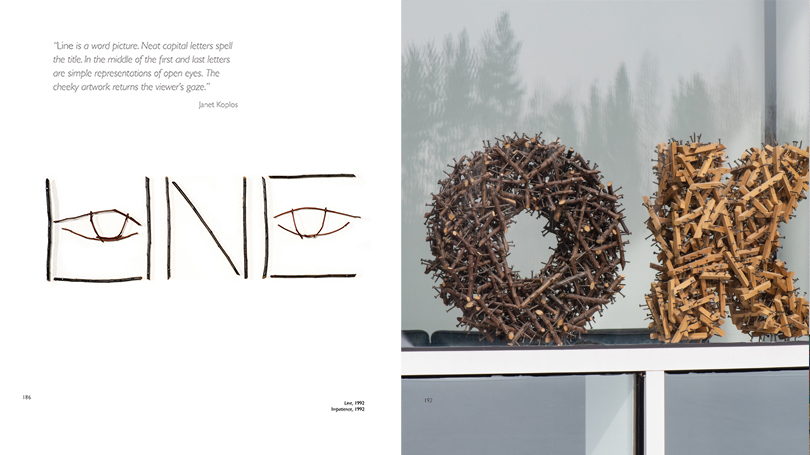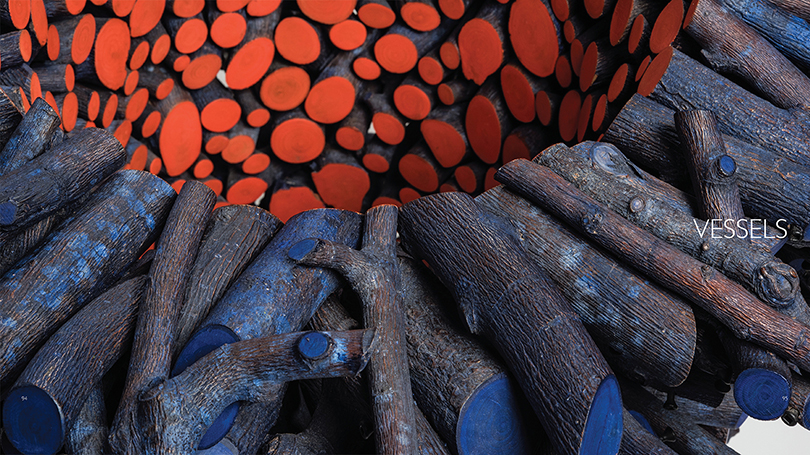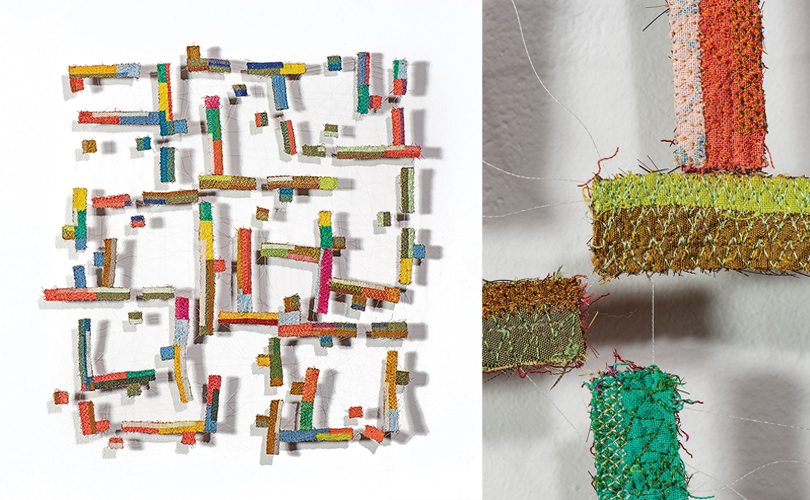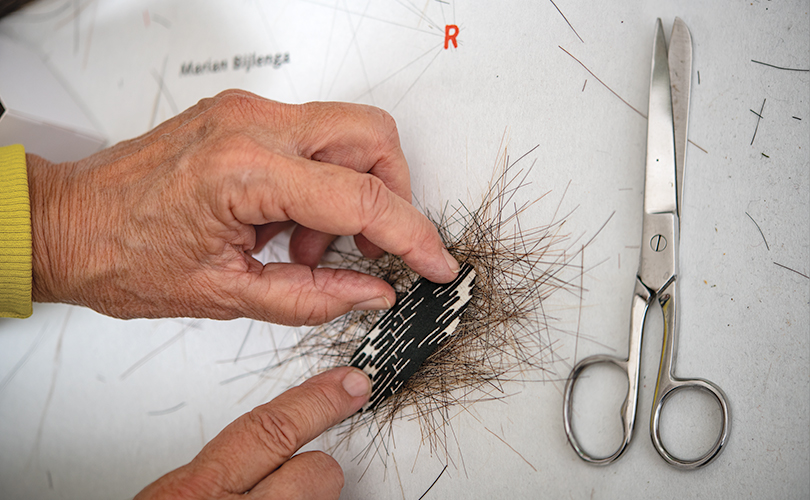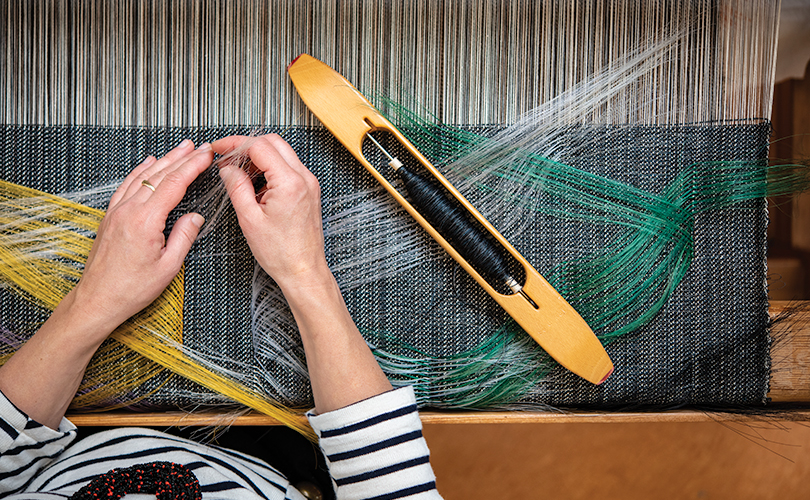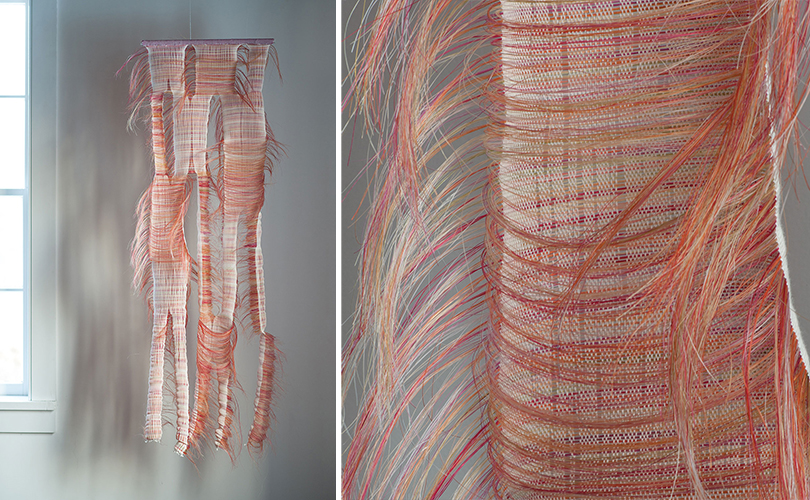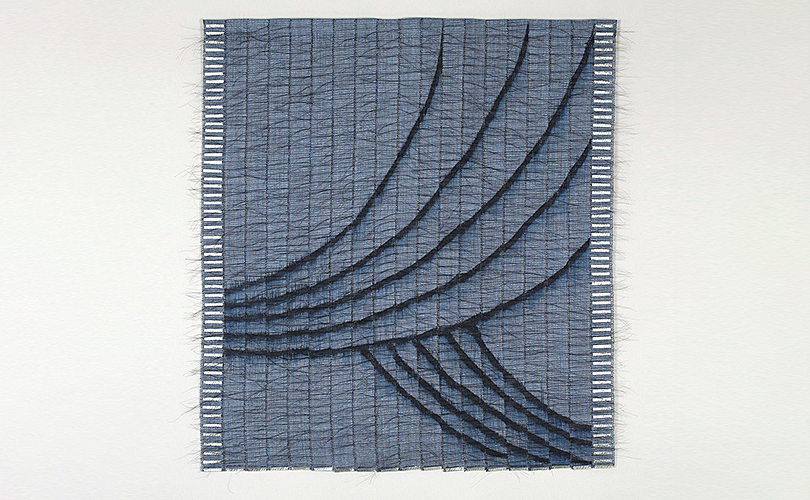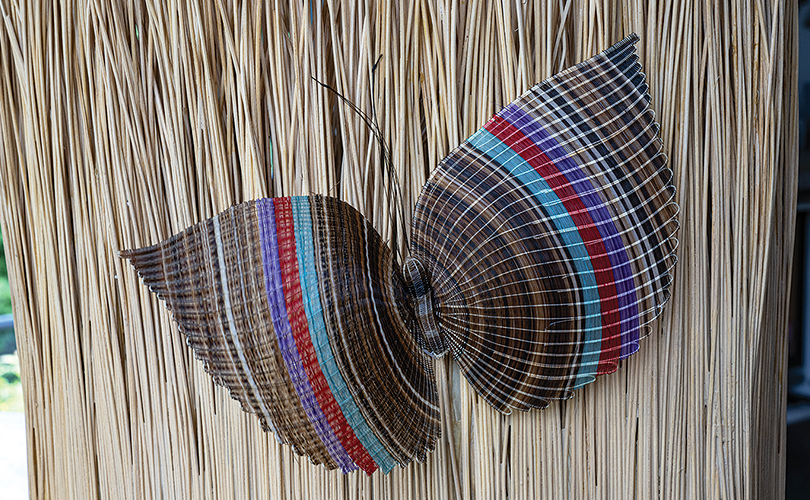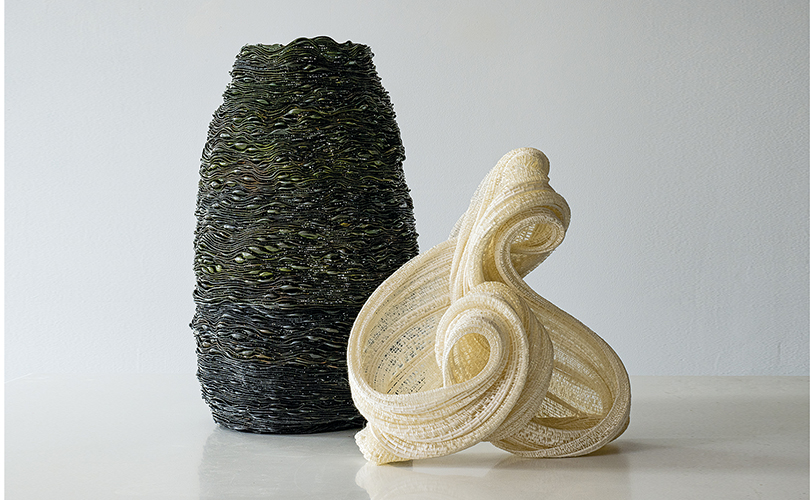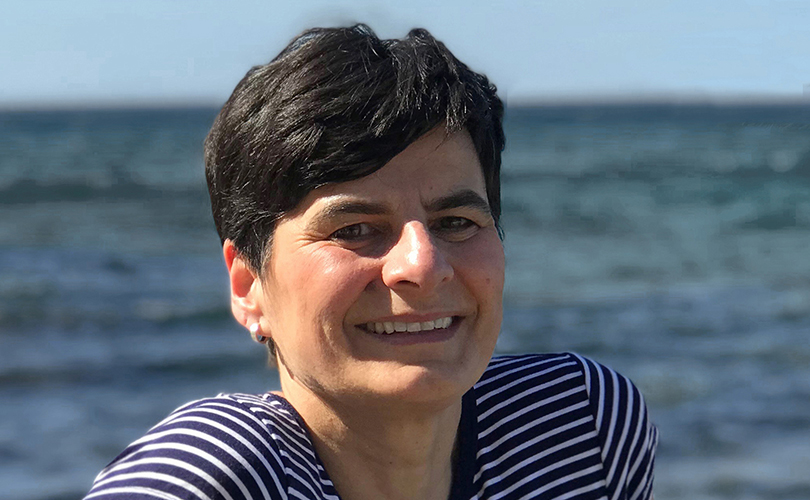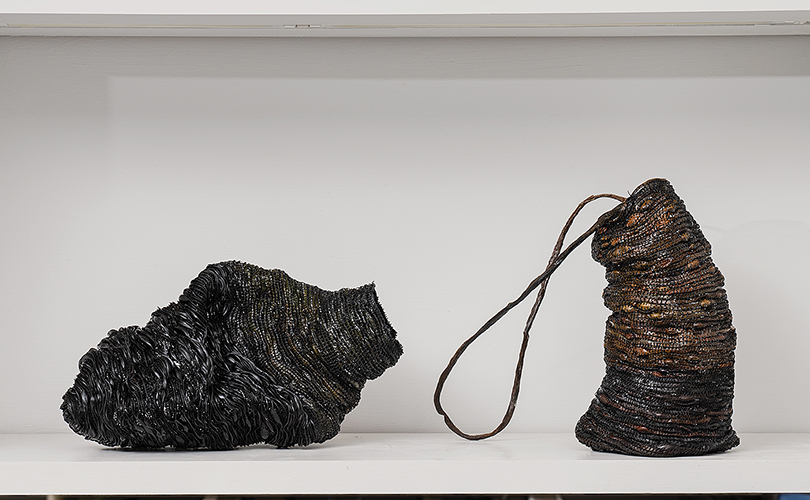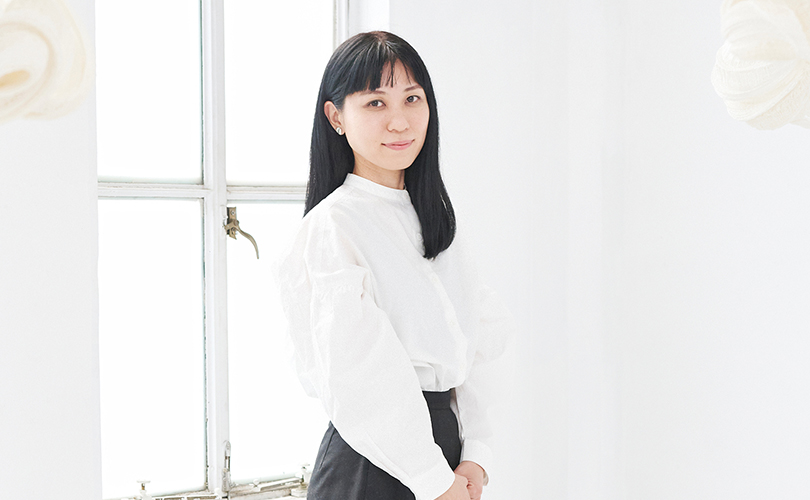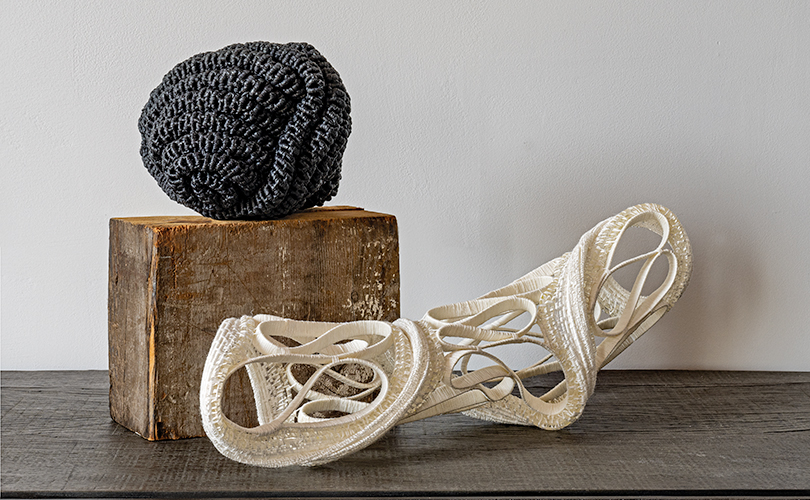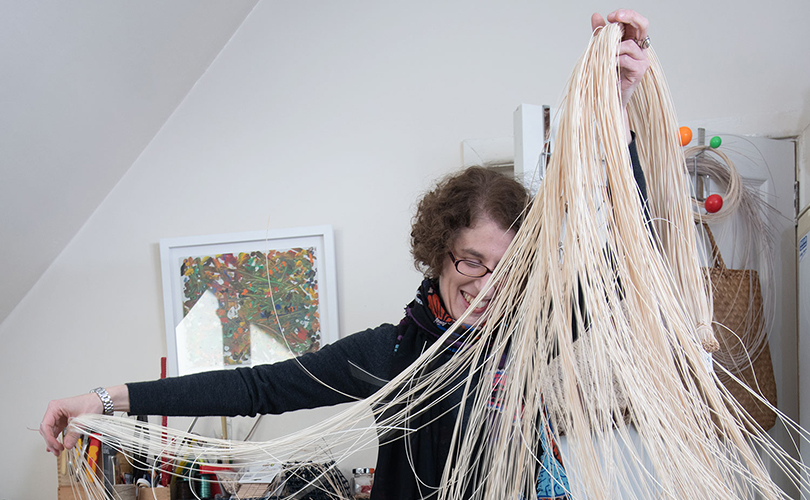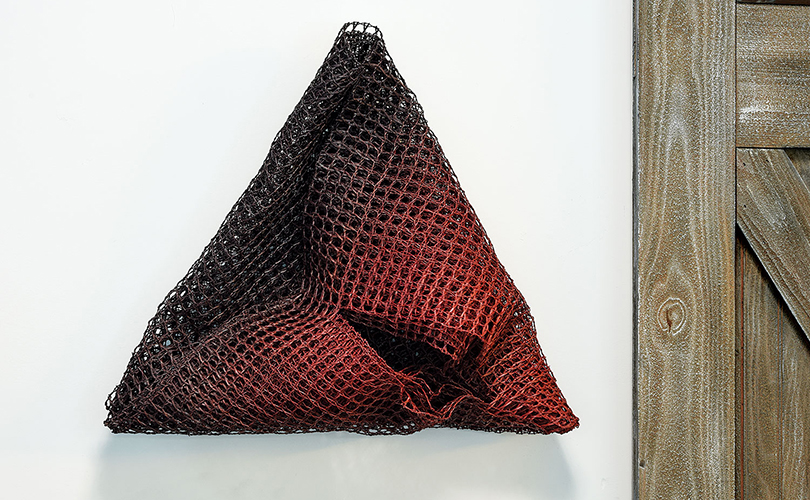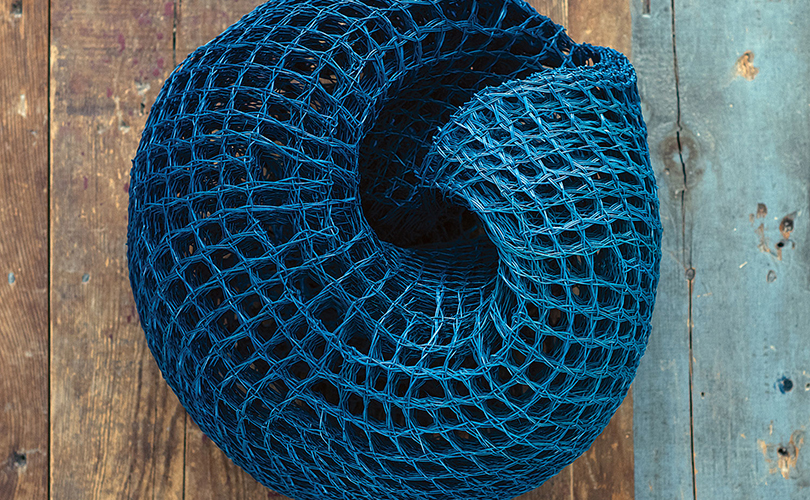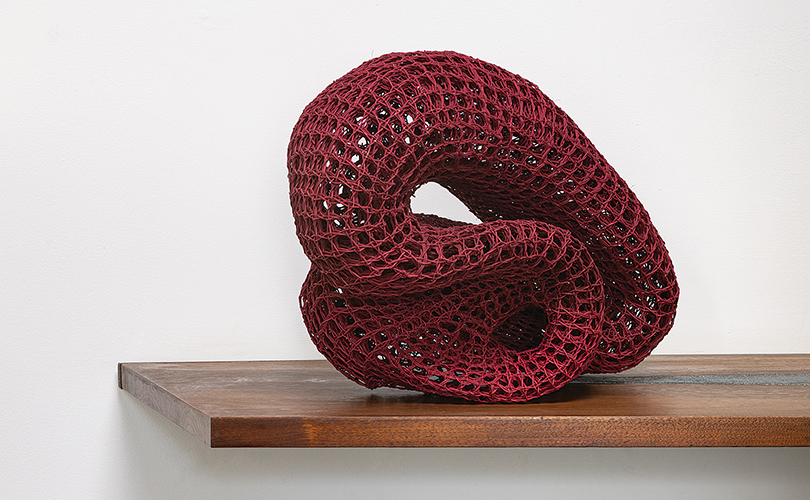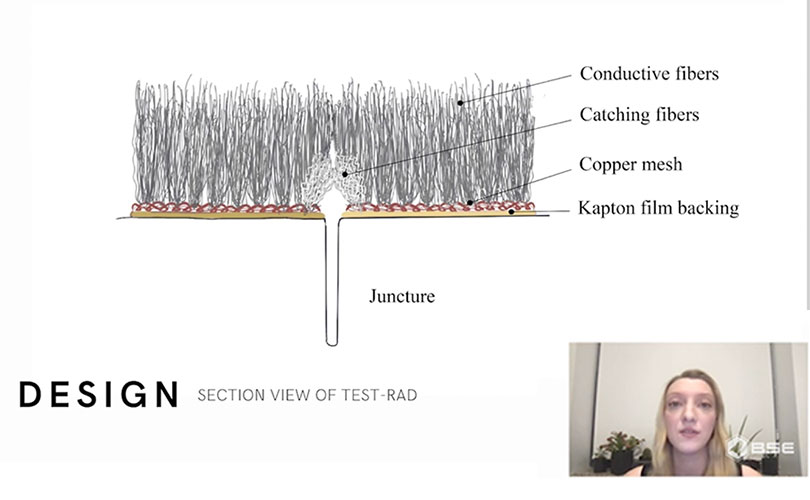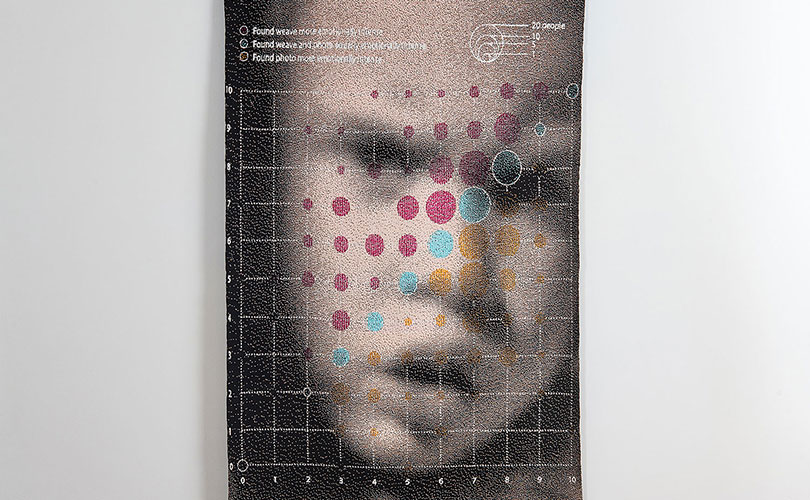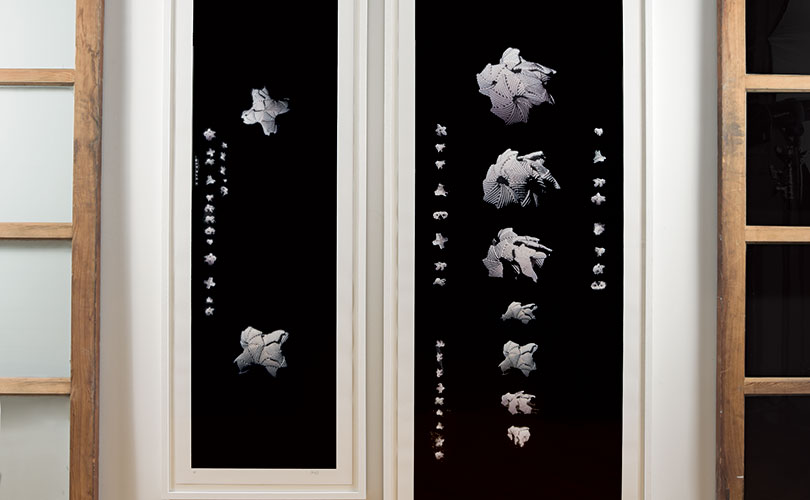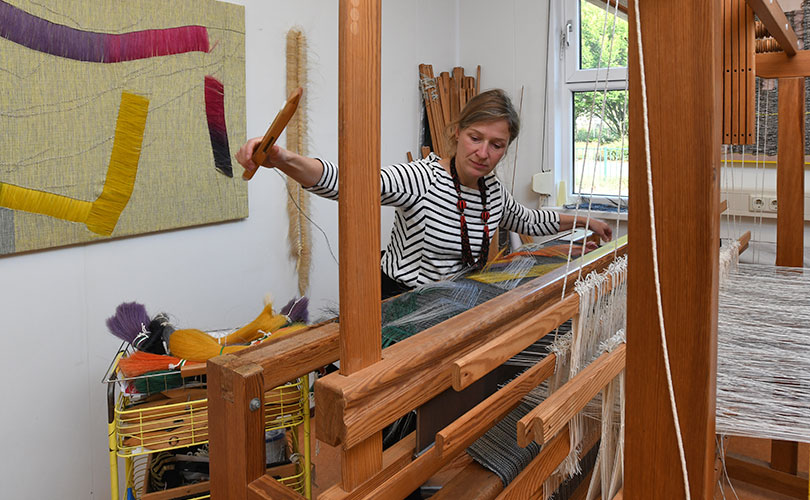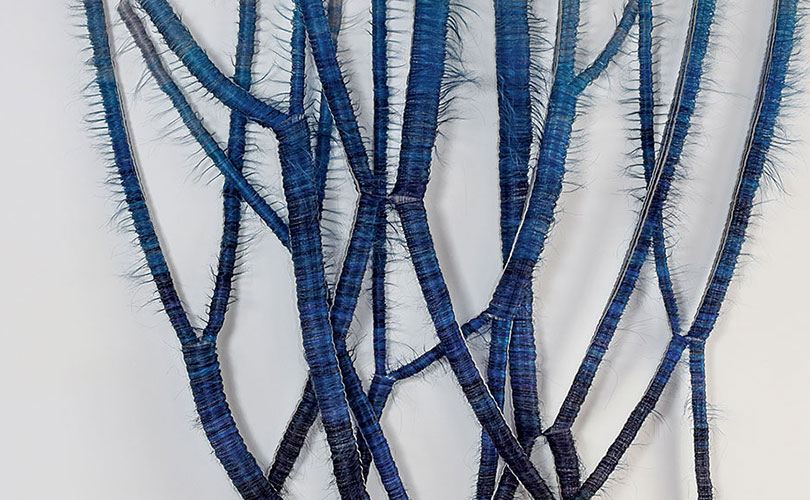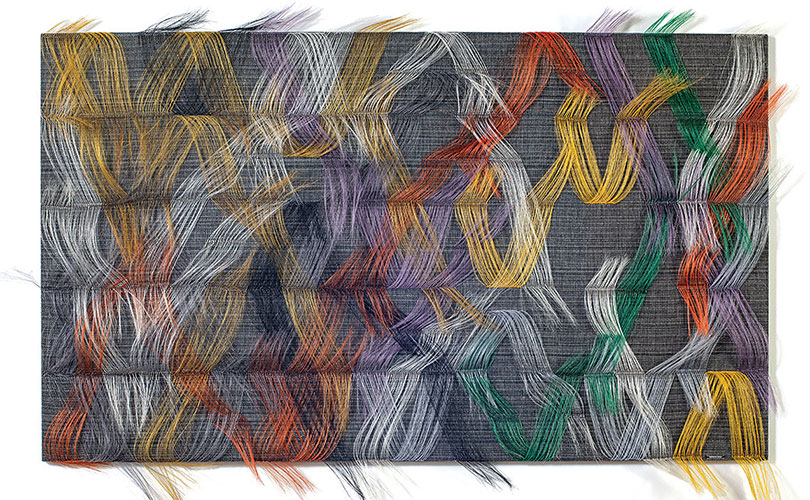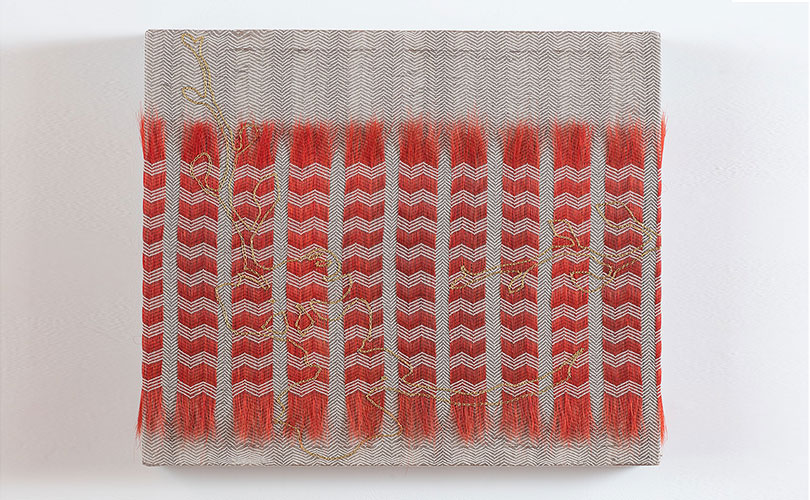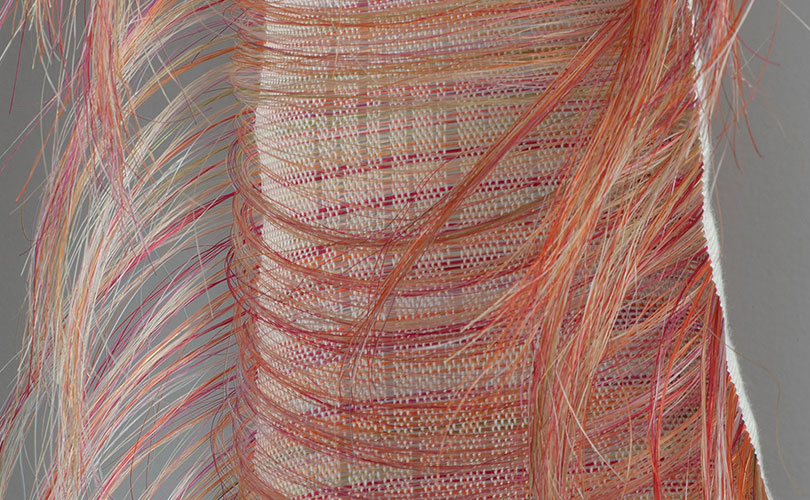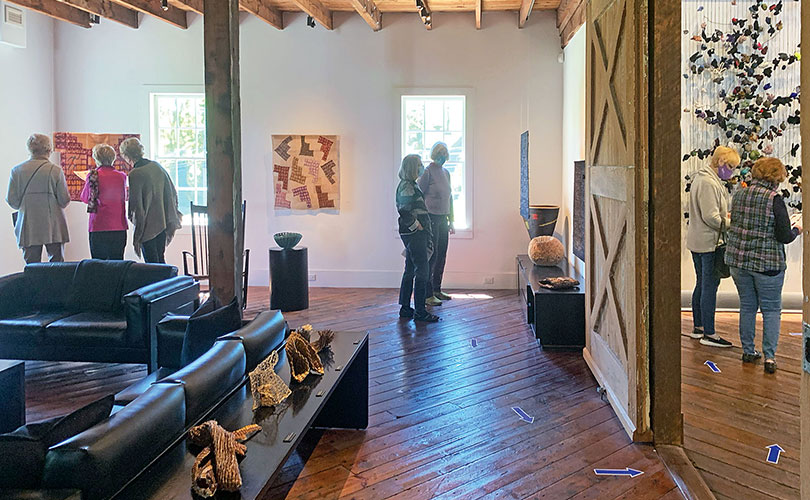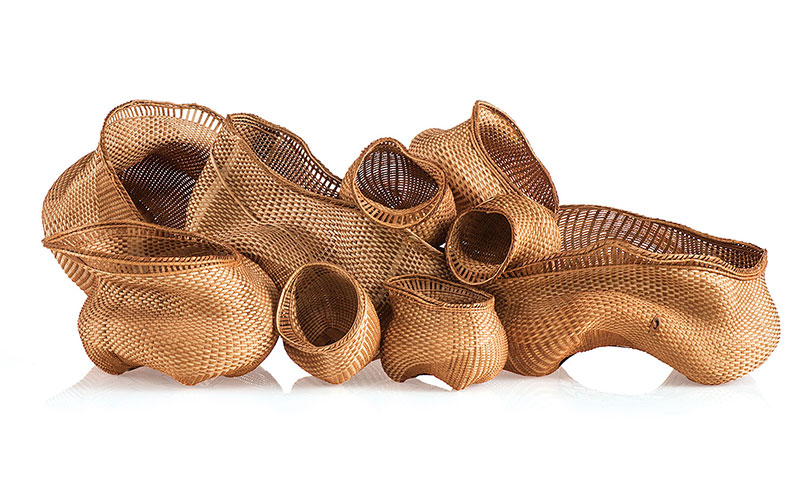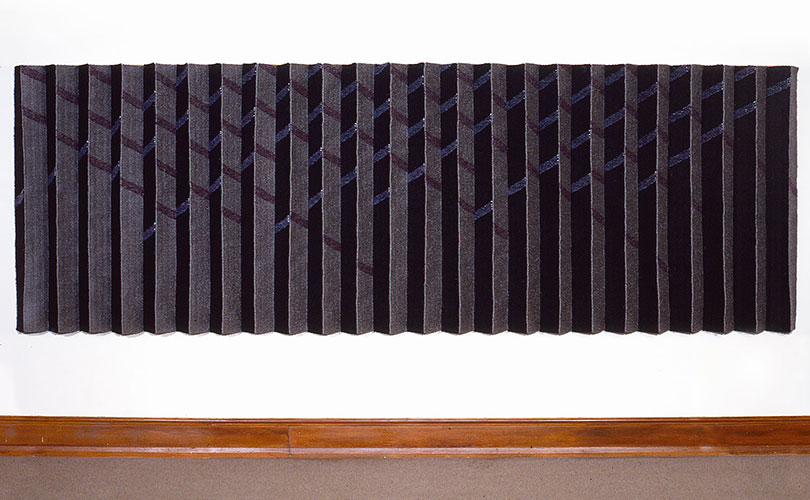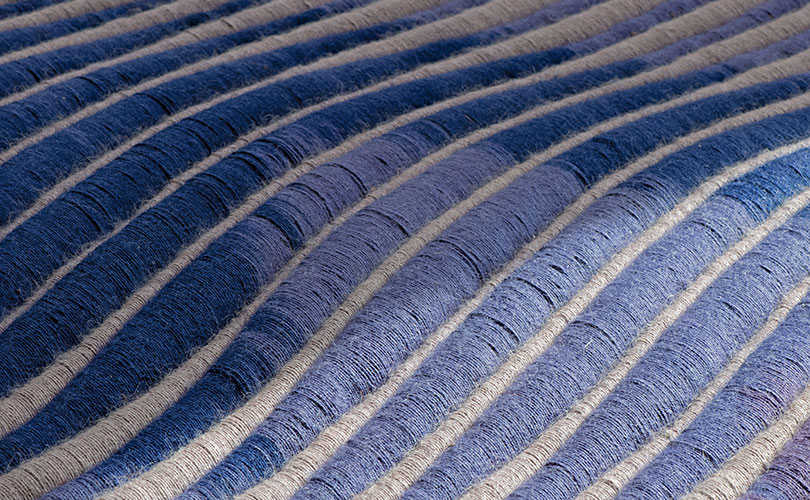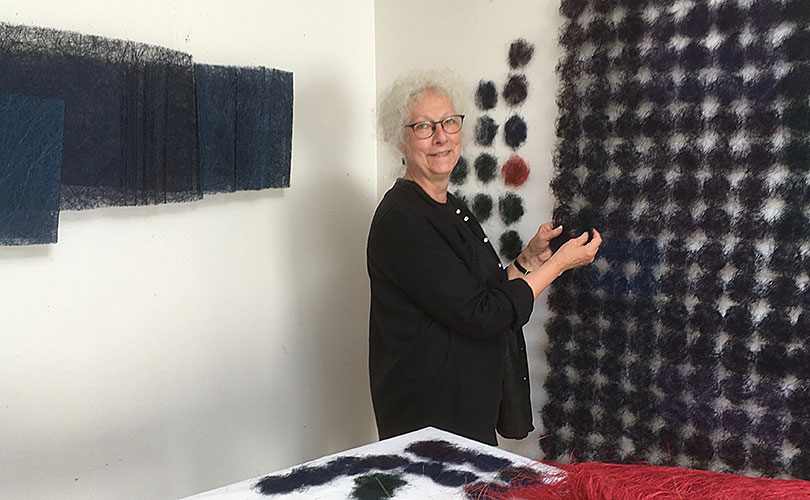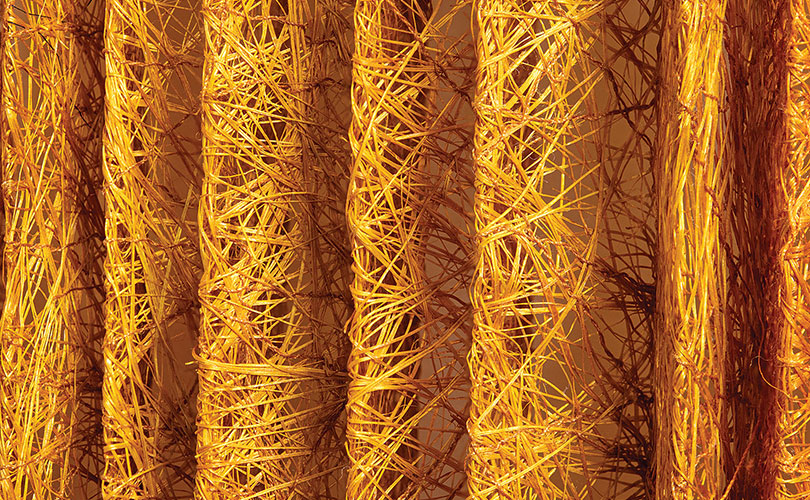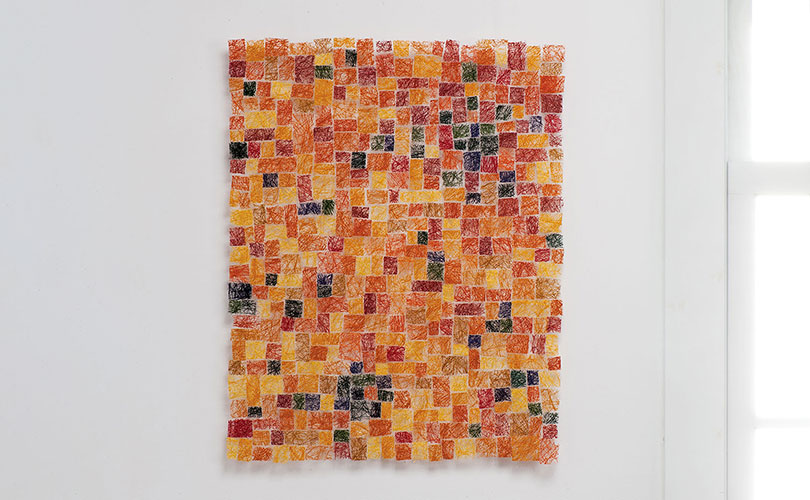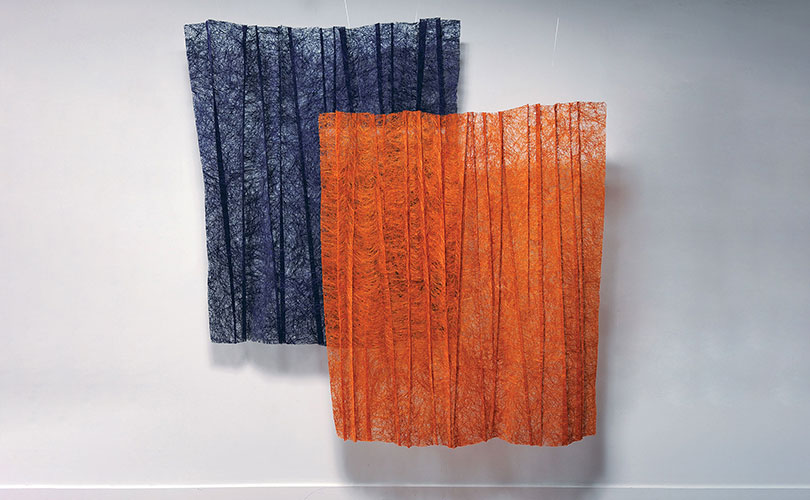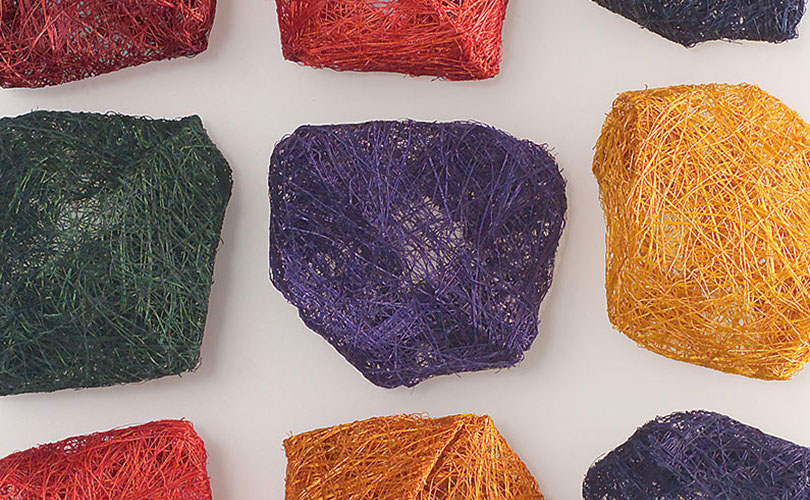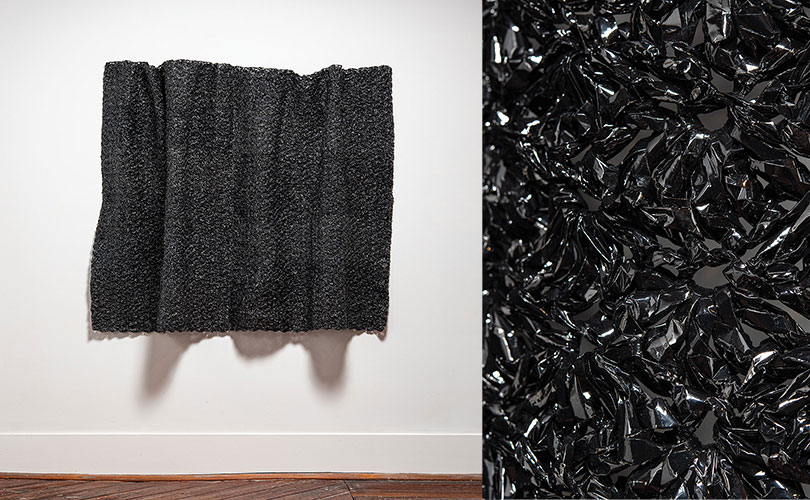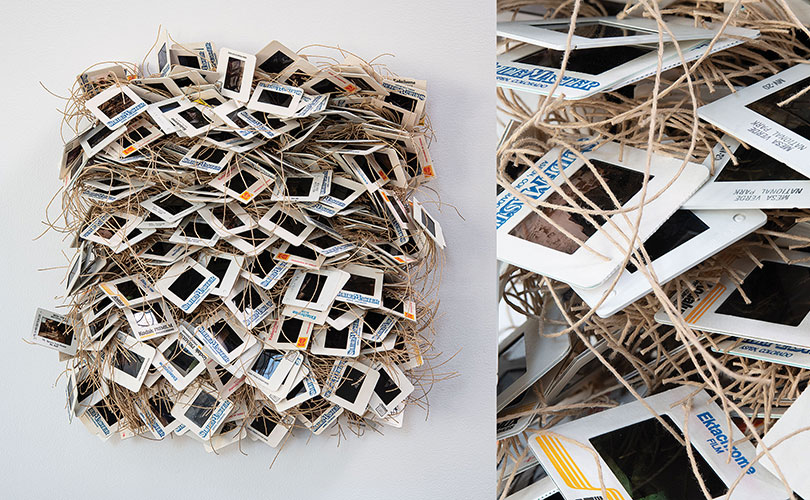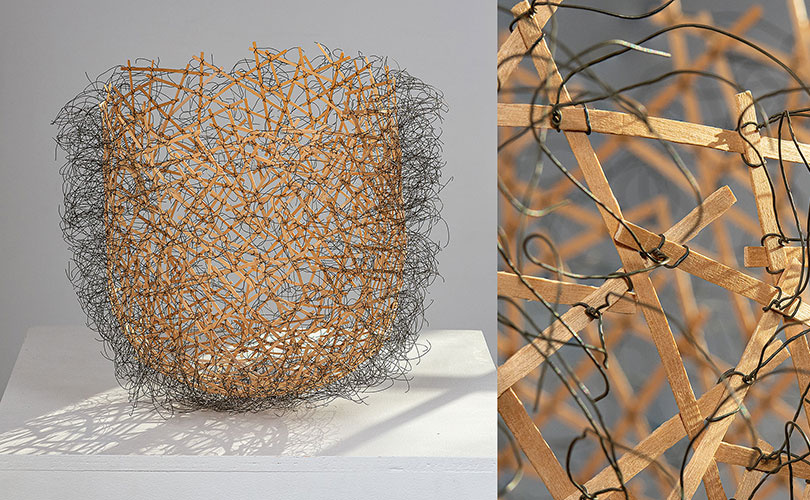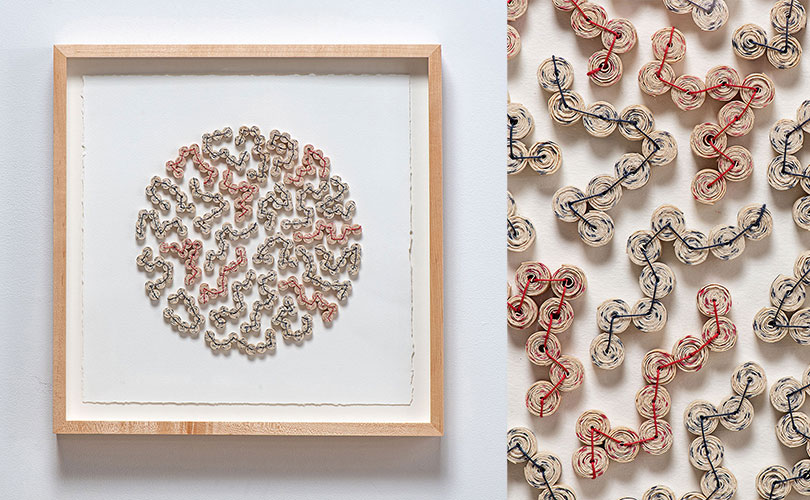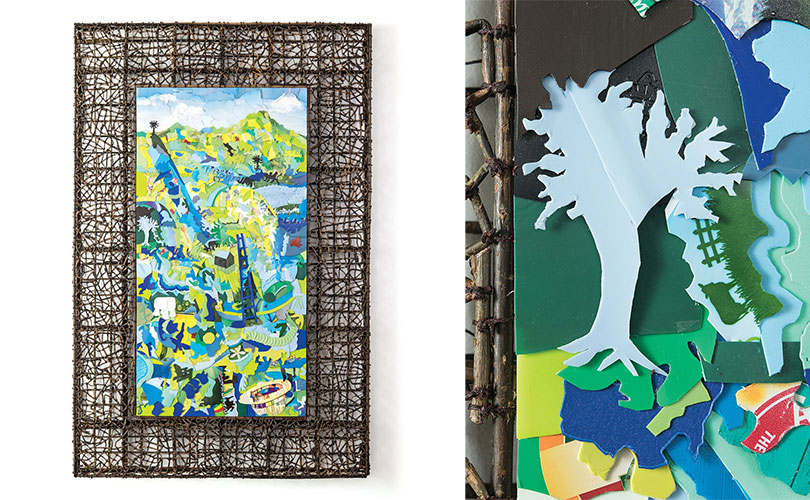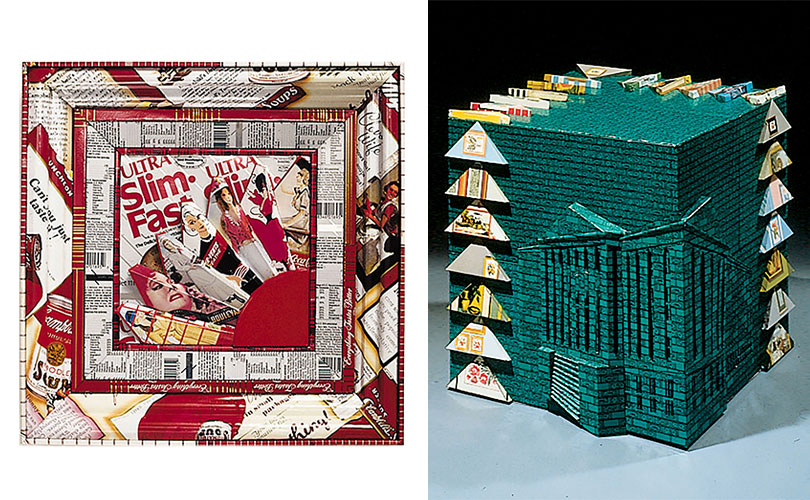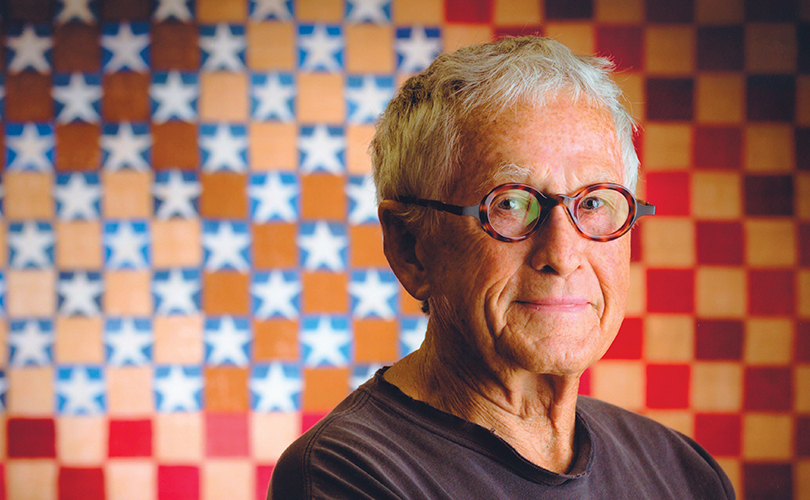
James Bassler describes himself as a problem solver. He loves nothing better than to pursue an idea and discover how the final execution differs from his initial “fuzzy” conception. An American Craft Council Gold Medalist, Bassler writes engagingly about his investigations into pre-Columbian and other weaving techniques, his experiments with different dyes and materials, and the influence of current events and modern life on his work. We share some excerpts of his writings below:
Origins
It didn’t hurt me to grow up in a family steeped in hard work and hand processes. My father was brought up in a Mennonite community in Pennsylvania. He was a major league baseball player, but interestingly enough, he had other talents including the hooking of rugs. I was introduced to the textile traditions at a very early age. I entered UCLA in the early 1950s. In 1953, I was drafted into the US Army with a tour of duty in Europe, followed by a civilian job in England. In 1960, I returned home via a cargo ship to China and Japan. It was on this journey that I witnessed the importance of world crafts, and their essential role in cultures. A spinning and weaving demonstration in Bombay, was of particular interest, as well as the dyeing processes of Indonesia and Japan. Returning to California, I re-entered UCLA as an art student and began to explore fabric patterning and later, weaving.
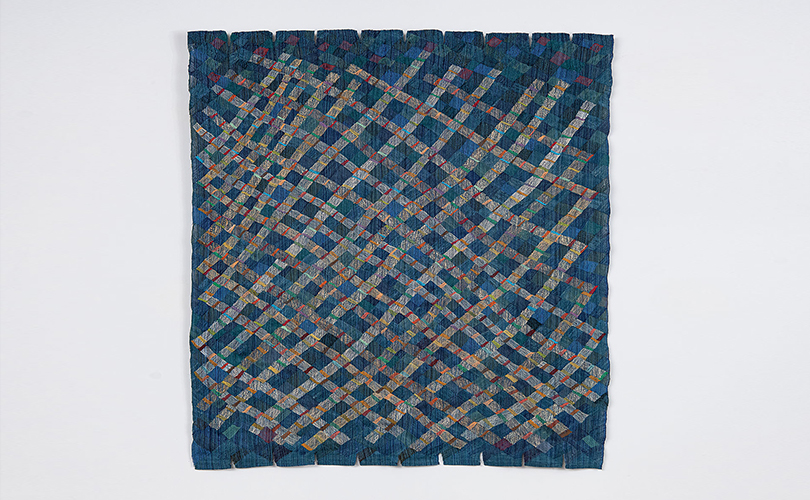
On plaiting
To Plait is part of a series of weavings that propose to illustrate and demonstrate a variety of structures used throughout history and the world to create objects of fiber. Currently, with so much attention and interest directed toward electronics, I have found little curiosity directed toward how material objects are made. How did early people survive? To Plait can help answer that question. To Plait could help someone, some day, actually make something with their hands.
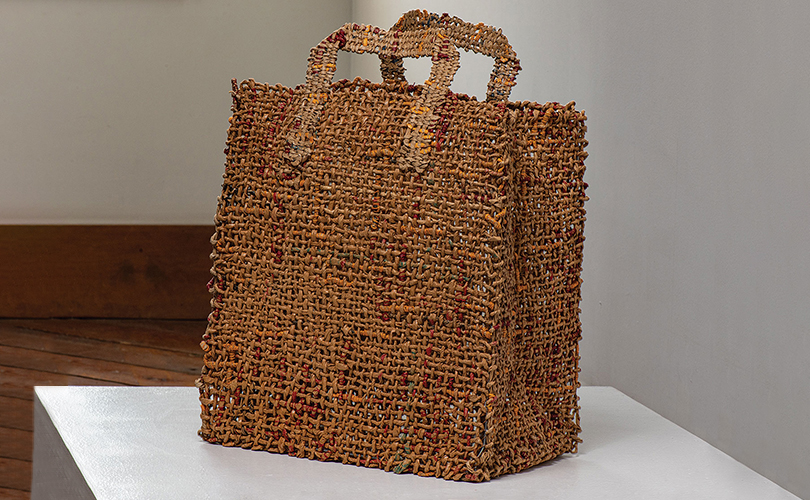
On spinning
My intent to spin and weave Shop [made from “yarn” spun from Trader Joe’s bags] was not to create a handwoven shopping bag. I wove it to draw attention to the important role that vessels have played in ancient history, as they do today. I wove it to draw attention to the honesty and beauty of a simple, and readily available material. I wove it to draw attention to the adaptability of handweaving to create three-dimensional forms, but most of all, I wove it to celebrate the beauty of a handmade object.
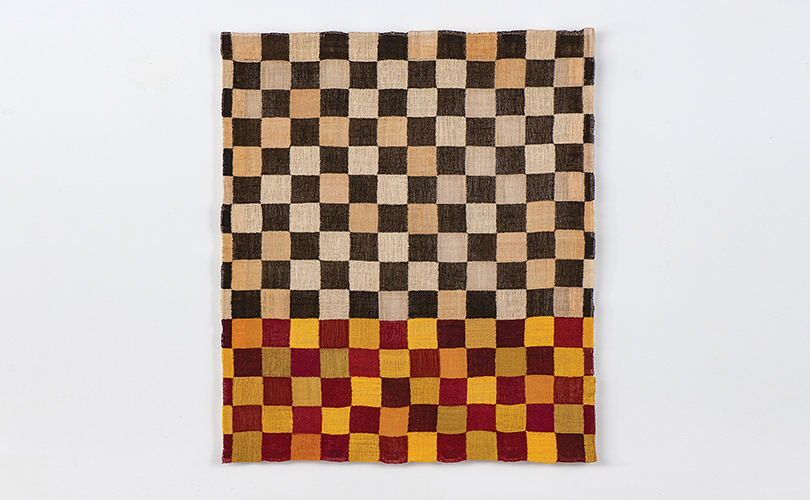
On pre-Columbian textiles
For over 30 years I taught at UCLA. For 12 of those years I offered a course entitled “Textiles of the World: The Americas,” in the Fowler Museum there. With access to the Museum’s vast collection I became much more familiar with the challenges that the early indigenous people faced in order to create an identity to their particular cultures. In terms of historical woven textiles created in the Americas, in particular areas, a weaving process was developed. It is identified as scaffold weave, or four-selvaged and it is quite different from the weaving traditions of Europe.
In 1999, I challenged myself to learn scaffold weave, aided, I will confess, by some 20th century modifications, including foam core, straight pins, and large needles. From that time on a good portion of what I have created uses this ancient technology. I choose it because of the freedom it gives me. However, the process does take longer.
Regarding the woven textiles of the pre-Columbian Andean Cultures, one of the most recognizable patterns is the use of the checkerboard. One sees the checkerboard tunic often because it was the uniform of the Inca military, but it was used frequently in other ways. I was inspired by images I had seen in a catalog of an exhibition at Yale University which Jack Lenor Larsen had sent me. A second inspiration came from beautiful images of pre-Columbian Andean shibori. Simultaneously, I began to explore these ideas, one a black and white checkerboard, scaffold weave, using a multitude of yarns I had been anxious to use. On the other project, also scaffold weave and checkerboard, I chose to use a great variety of wool yarn since I planned to use natural dyes in the shibori process.
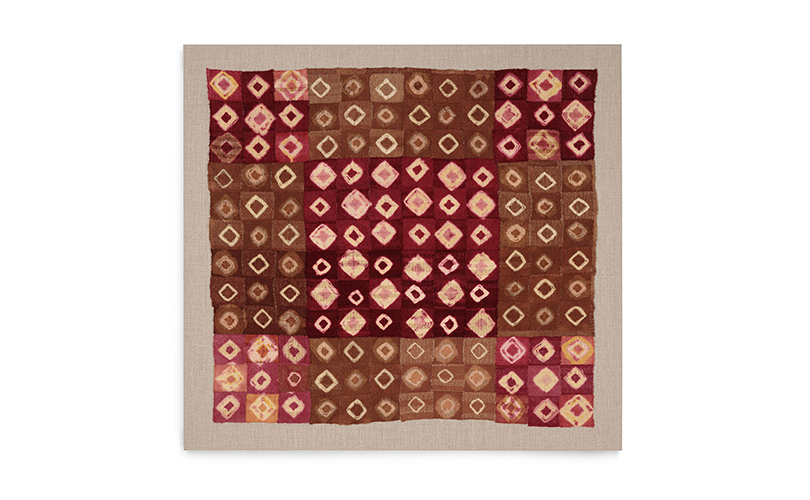
In the piece Mi Wari Boro, the word “boro” comes from the Japanese tradition of repair and mending. I was faced with the need for numerous patches and mending in this piece due to the variety of wool yarns I introduced and their reaction to the numerous dye baths they were subjected to. Thus, the inspiration came from the pre-Columbian culture and the Japanese tradition of mending.
I can say that a good amount of time was spent on each piece, including challenges that left fond memories regarding how certain problems were resolved, and what I learned. I really, truly am more comfortable in pre-Columbian time, thus “on Inca time.”
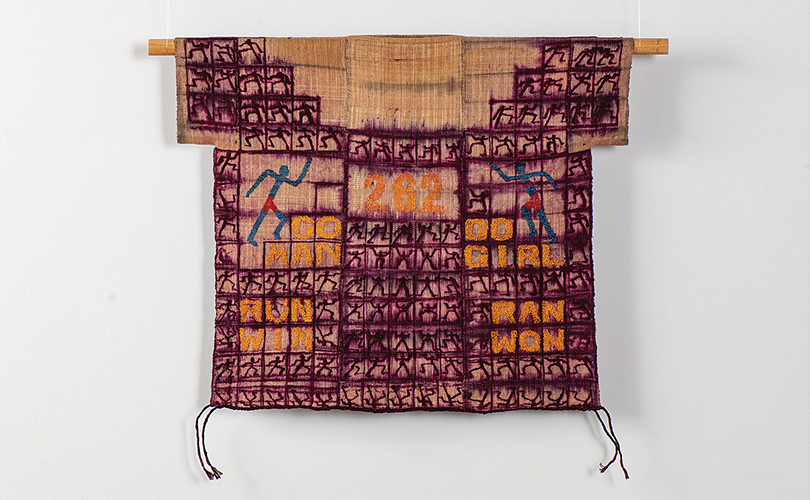
On running: My Yantra Jacket
I was one of 11 artists invited to participate in the exhibit Sourcing the Museum at The Textile Museum in Washington D. C., curated by Jack Lenor Larsen. Regarding the process of selecting an object from the museum collection, I was dubious that I could be moved by an image on a computer screen, that I had never seen or touched. Nevertheless, after several searches I kept coming back to a Burmese shirt, with all the writings and mystical symbols covering the surface. After some research, I discovered that the drawings are called yantras, and that they are magical and sacred symbols to evoke protection, good luck, prosperity, support, love and compassion from the cosmic universe. At my age, I thought I could use all that positive energy.
Underlying this selection was the deeper desire to finally celebrate, with bravado, my achievements of competing in numerous marathon races. In order to complete these and other shorter runs, I had clothed my body in a variety of yantras, from puritan simplicity to blatantly annoying symbols of products I never used, love of God, city, state, or political alignment. This was the opportunity to create something regal, that captures the focused endurance of the individual marathon runner, along with the chants and ultimate tacky trophies and medals that await the victors. Yesterday’s yantras, today’s tattoos.
In remote mountain communities of the Sierra region of Oaxaca, women continue to collect and spin silk cocoons found on native oak trees. Bound by tradition, threads are dyed in a strong magenta dye and allowed to dry, unrinsed. These specific yarns are woven to create brocade images into a cotton ground. After being woven, the cloth is folded and bound, and submerged into a hot water bath, allowing the dye to bleed (wick), creating a pattern. Using this same silk, I created many brocade images of runners, leaving spaces for the images to print, or wick, during the dyeing process. Separately, the three panels of cloth that make up the piece were each carefully folded, clamped and submerged into the hot water, permitting the dozens of runner figures to emerge.

